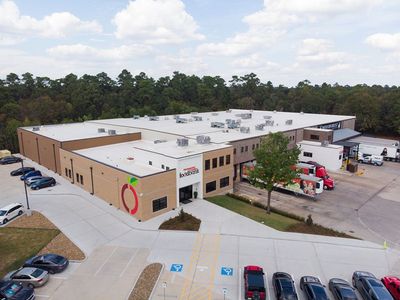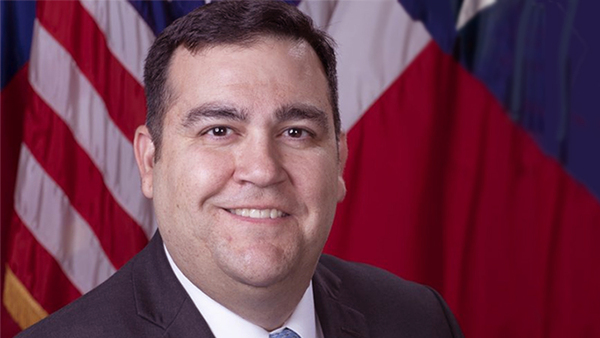- Sections :
- Crime & Public Safety
- Restaurants & Food
- Sports
- More
Categories
Freedoms and changes in high school pose special challenges for autistic teens and their families
THE WOODLANDS, Texas - High school is a special time of life full of rigorous academic demands, raging hormones and social complexity. Families with students on the autism spectrum must deal with all the traditional challenges of high school, along with the special needs of their children.
Just as they have helped their child change from one school to another throughout childhood, families must step up again for their autistic teenagers. Families must maintain open channels of communication with their teenager, as well as school representatives to get the most out of high school and prepare students for the young-adult years ahead.
“We are focused on academics, social and emotional growth and self-help skills,” says Barbara T. Grogan, a Parent Liaison for the Conroe Independent School District and a parent of two children on the autism spectrum. CISD has 5,000 students in special education throughout the district, and Grogan explains that by high school, educators are well aware of a student’s needs and goals. That doesn’t mean a parent’s job is over, however. “Schools need you to voice your opinions and ask questions. By high school, most of our students don’t need any additional testing, but they still need parents who have a voice and are active.”
High school involves lockers and class changes, cliques and dating—daunting for typical students and amplified for those on the autism spectrum. Paul Louden, an advocate for autism awareness and co-host of the radio show Understanding Autism explains that even as autistic teenagers strive for privacy and independence, parents must stay keenly involved to help students navigate the challenges of high school.
“High school offers a lot of autonomy, where things were previously more structured. People on the autism spectrum typically prefer schedule and routine,” Louden says. “It can also be a social minefield. Stresses are more acute for teens on the autism spectrum, who can have a tougher time with social cues and be hurt and confused. Think about the challenges and difficulties of high school and imagine what it would be like if you couldn’t really understand what was happening.”
No two teens on the autism spectrum are the same. They each have their own academic aims, extracurricular activities and needs for social interaction. It is key for parents to continue to develop their understanding of their child’s needs and wants, and help them achieve their goals. It’s not necessarily easy, because autistic teens want their own identities, but Louden urges parents to try to find the balance that works for their family.
"A lot of time on the autism spectrum there are social weaknesses and delay," Louden says.“You can help teens open up and reveal their decision-making process and outcome. Do they want more friends? Do they want to join a team? Develop your understanding of how your child is thinking,”
As far as academics go, parents of special education high school students have regular opportunities to meet with teachers and administrators for Admission, Review and Dismissal (ARD) reviews, as they have throughout elementary and junior high school. At these meetings, parents and teachers set goals, evaluate academic levels and can determine the best ways to help their students achieve their goals. Schools can help autistic students avoid crowded hallways, offer more time to take tests, and make full use of accommodations to help students perform to their potential. Parent’s life-long knowledge of their child’s strengths and weaknesses is crucial in helping administrators choose the right plan for each student.
“A lot of our parents don’t feel it’s necessary to go to ARD meetings by high school,” Grogan says. “Don’t do that! Not all kids with autism are going off to UT and A&M, but we can evaluate their likes and interests and start gearing those strength toward their options.”
Grogran explains that one of the biggest challenges of high school is to prepare students for the transition to what comes next—whether it’s employment, higher education or independent living. As a child enters high school, the changes in routine and rigor are a taste of life ahead as an adult. It can be exciting and daunting to both teens and parents, and working together can offer a greater chance of success and understanding.
For more information on Paul Louden and Understanding Autism, visit www.understanding-autism.info.
Just as they have helped their child change from one school to another throughout childhood, families must step up again for their autistic teenagers. Families must maintain open channels of communication with their teenager, as well as school representatives to get the most out of high school and prepare students for the young-adult years ahead.
“We are focused on academics, social and emotional growth and self-help skills,” says Barbara T. Grogan, a Parent Liaison for the Conroe Independent School District and a parent of two children on the autism spectrum. CISD has 5,000 students in special education throughout the district, and Grogan explains that by high school, educators are well aware of a student’s needs and goals. That doesn’t mean a parent’s job is over, however. “Schools need you to voice your opinions and ask questions. By high school, most of our students don’t need any additional testing, but they still need parents who have a voice and are active.”
High school involves lockers and class changes, cliques and dating—daunting for typical students and amplified for those on the autism spectrum. Paul Louden, an advocate for autism awareness and co-host of the radio show Understanding Autism explains that even as autistic teenagers strive for privacy and independence, parents must stay keenly involved to help students navigate the challenges of high school.
“High school offers a lot of autonomy, where things were previously more structured. People on the autism spectrum typically prefer schedule and routine,” Louden says. “It can also be a social minefield. Stresses are more acute for teens on the autism spectrum, who can have a tougher time with social cues and be hurt and confused. Think about the challenges and difficulties of high school and imagine what it would be like if you couldn’t really understand what was happening.”
No two teens on the autism spectrum are the same. They each have their own academic aims, extracurricular activities and needs for social interaction. It is key for parents to continue to develop their understanding of their child’s needs and wants, and help them achieve their goals. It’s not necessarily easy, because autistic teens want their own identities, but Louden urges parents to try to find the balance that works for their family.
"A lot of time on the autism spectrum there are social weaknesses and delay," Louden says.“You can help teens open up and reveal their decision-making process and outcome. Do they want more friends? Do they want to join a team? Develop your understanding of how your child is thinking,”
As far as academics go, parents of special education high school students have regular opportunities to meet with teachers and administrators for Admission, Review and Dismissal (ARD) reviews, as they have throughout elementary and junior high school. At these meetings, parents and teachers set goals, evaluate academic levels and can determine the best ways to help their students achieve their goals. Schools can help autistic students avoid crowded hallways, offer more time to take tests, and make full use of accommodations to help students perform to their potential. Parent’s life-long knowledge of their child’s strengths and weaknesses is crucial in helping administrators choose the right plan for each student.
“A lot of our parents don’t feel it’s necessary to go to ARD meetings by high school,” Grogan says. “Don’t do that! Not all kids with autism are going off to UT and A&M, but we can evaluate their likes and interests and start gearing those strength toward their options.”
Grogran explains that one of the biggest challenges of high school is to prepare students for the transition to what comes next—whether it’s employment, higher education or independent living. As a child enters high school, the changes in routine and rigor are a taste of life ahead as an adult. It can be exciting and daunting to both teens and parents, and working together can offer a greater chance of success and understanding.
For more information on Paul Louden and Understanding Autism, visit www.understanding-autism.info.
Comments •

















